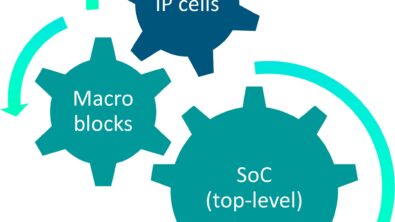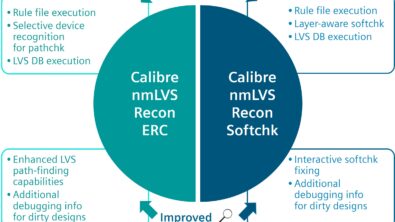Streamlining semiconductor verification with the Calibre Interactive interface

By Slava Zhuchenya
In the world of semiconductors, creating and verifying IC designs is no cakewalk. It’s a complex dance that involves a bunch of tools and simulations. Design companies rely on electronic design automation (EDA) tools to put IC designs through their paces before hitting the manufacturing line. These EDA tools are used to check if everything’s in order, from design rules to circuit layouts, ensuring that these intricate chips work as intended.
Diving into the design maze: a quick look at ICs and EDA tools
Let’s break this down a bit. Imagine you’re designing a super complicated IC. You’d want to double-check everything—the design rules, how the layout corresponds to the schematic, the parasitic bits that sneak in, and the electrical rules that shouldn’t be broken. But as designs grow bigger and fancier, so does the checklist. You need more checks to make sure these chips will be just as you want them.
Chaos in the verification playground
Here comes the tricky part. Wrangling all these verification tasks is complex and expensive, especially for those design houses. Each has its own system to manage these tasks. Many use custom scripts, but as you likely already know, they can be tough to handle and maintain. Queueing up different jobs, from different tool flows, for various design cells, and making sure everything happens in the right sequence? Yikes!
Enter the Calibre Interactive interface: The sidekick to the superhero of verification
The Calibre® nmPlatform software suite is the go-to EDA toolbox for all design big shots and foundries out there. But it needs a controller to keep the process organized, and that tool is the Calibre Interactive interface. We’ve given the Calibre Interactive tool a makeover with a new feature—the multiple job submission (MJS) GUI. It’s like giving your old car a shiny new infotainment system and a turbo-boosted engine!
With the Calibre Interactive MJS GUI, setting up a queue of verification jobs becomes as easy – you can easily add, submit, and monitor these jobs. And guess what? You can even reuse these setups for different projects.
Challenges? Yes—but Calibre MJS GUI to the rescue
Now, let’s talk about the organizational challenges—job priority, resource sharing, and job babysitting. These are three efficiency hurdles that all design teams face. Imagine sorting out which tasks need attention first, making sure they don’t hog all the resources, and keeping an eye on each job’s progress. Luckily, the Calibre Interactive MJS GUI takes on these challenges with ease. When it comes to priorities, it gives you a visual queue. You can move jobs around like chess pieces, deciding who gets the front row seat and who’s in the back row, completely in your control.
Avoiding resource wars: keep those CPUs happy
You’ve got CPUs, memory, and disk space—and you have to share them, of course. Calibre Interactive MJS GUI lets you decide how many jobs can join the party at once. You can even set limits for different types of tasks.
Job watch: catching problems, fast!
Monitoring? Not a problem. Calibre Interactive MJS GUI makes it easy, giving you a bird’s-eye view of what’s happening. Running jobs, waiting ones, completed tasks, and those that stumbled—it’s all there in one glance. You can even check each job’s transcript for a detailed report. It’s like having a cheat sheet during an exam (not that any of us would do that)!
Wrapping up the tech adventure
So, there it is—the Calibre® nmPlatform toolsuite with the Calibre Interactive MJS GUI is like having a superhero duo for all your semiconductor design woes. The Calibre nmPlatform provides trusted, proven signoff verification while the Calibre Interactive MJS GUI tackles job chaos, sorts priorities, manages resources, and keeps an eye on things. With the Calibre® nmPlatform and Calibre Interactive interface working together, verification becomes easier, faster, and more efficient. You can finally take a deep breath and say, “Semiconductors, you’ve met your match!”
To read more on this topic, read or download a copy of our technical papers:
Next-generation Calibre Interactive capabilities enhance runtime ease of use
Automated run management for multiple IC design verification jobs increases productivity


